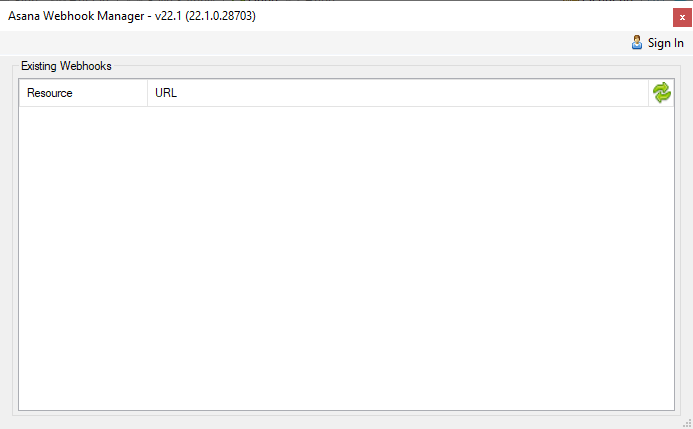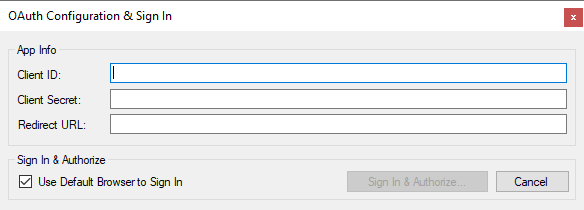Asana Webhook
The Asana Webhook page allows you to configure Asana’s webhook within the Integration Gateway to receive requests from it.

- Webhook Secret
- This field will hold the generated hook secret from Asana API when a webhook is created.
- Show
- This button will reveal the currently used Webhook Secret.
- Manage Webhook
-
This button will open Asana Webhook Manager in order to configure new webhooks.

- Sign In
-
This button will open a new dialog in order to enter the App info, which will be used to authenticate to the Asana service.

- Client ID: The Client Id option allows you to specify the unique ID which identifies the application making the request.
- Client Secret: The Client Secret option allows you to specify the client secret belonging to your app.
- Redirect URI: The Redirect Url option allows you to specify the Redirect Url which was assigned to your app.
- Use Default Browser to Sign In: When this option is checked the Sign In and Authorize button will open your default web browser in order to complete the authentication. When this option is unchecked, the Sign In and Authorize button will complete the entire authentication process inside of the toolkit.
- Asana App Registration
-
Applications can be created from the "Apps" tab of your account settings, where you will find your Client ID and Client Secret. You must supply your new application with:
- App Name - A name for your application. A user will see this name when your application requests permission to access their account as well as when they review the list of apps they have authorized.
- App URL - The URL where users can access your application or, in the case of native applications, this can be a link to the setup or support instructions. Note that this URL must start with "http" or "https".
- Redirect URL - As described in the OAuth specification, this is where the user will be redirected upon successful or failed authentications. Native or command line applications should use the special redirect URL urn:ietf:wg:oauth:2.0:oob. For security reasons, non-native applications must supply a "https" URL (more on this below).
- Once you have created an app, the details view will include a Client ID, needed to uniquely identify your app to the Asana API, as well as a Client Secret.
- Resource Type
- The type of resource which events will be created for when modified. For example, this field can be a task.
- Resource Subtype
- The resource subtype of the resource that the configured filter will apply to.
- Action
- The type of change on the resource to pass through the filter. This can be changed, added, removed, deleted, or undeleted, depending on the nature of the event.
- Fields
- A whitelist of fields for events which will pass the filter when the resource is changed.

